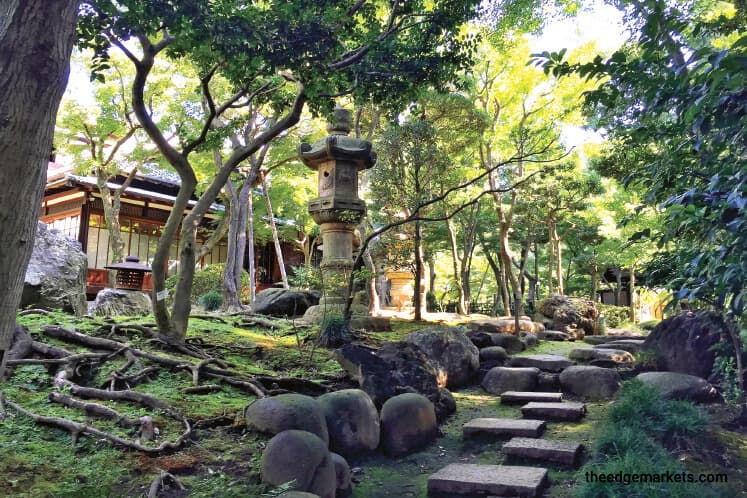
I could stay here forever, I sigh wistfully as I step into Tsutaya Books in Tokyo’s Daikanyama district. There are shelves and shelves of books — paperbacks, hardcovers, periodicals, bestsellers — as far as the eye can see. Floor-to-ceiling windows, aged timber flooring, stylish seating, listening stations for music and audio books, soft bossa nova in the air. If you need a nibble or a tipple, there is a café-cum-bar upstairs, its polished counter propped up by colourful stacks of books. Whether you’re thirsty for a flat white or a Sauvignon Blanc, if you’re a bibliophile, this is where you want to plant yourself as soon as you land in Tokyo.
True, most of the books are in Japanese, but there is a pretty impressive spread of international magazines and carefully curated array of merchandise, from vintage prints to handcrafted stationery, to keep you piqued. There are also movies to buy, rent or download. All of this is housed in award-winning architecture, where three modern blocks are linked by a 55m-long “magazine street” and the exterior wrapped in a white façade of interlocking T-shapes.
In an age where brick-and-mortar bookstores are vanishing, Tsutaya Books’ sprawling, library-esque homage to the printed word is a treat for those who prefer tomes to tweets. It is set in Daikanyama, an enclave that tourists often overlook, opting for other precincts such as glamorous Ginza and high-energy Shibuya. Only one metro stop away from Shibuya, Daikanyama is navigable, chic and civilised.
Tsutaya Books (17-5 Sarugakucho) may be a big draw, but the cobbled, winding streets of Daikanyama are dotted with delights, such as a tiny café serving full-bodied coffee from Yemen and sleek boutiques such as Maison Kitsune, the electronic music and fashion label from France, and Tenoha, a lifestyle and home accessories store with a restaurant set in a garden.
For men looking to add to their wardrobes, there are at least two must-see shops. One is UES (26-7 Sarugakucho), a Japanese denim and casualwear brand, whose snug Daikanyama showroom is also a workshop, giving it a raw, artisanal feel. UES prides itself on using natural materials, such as organic cotton, as well as a special “fading” dye on its jeans so that every time the denim is washed, it fades. The clothing range, totes, bags, shoes and other accessories also have the distinction of being made in Japan.
A.P.C. is the other store worth popping into, at the minimum for its aesthetics. The entrance is framed by lush greenery and the airy interior, featuring cast iron, wood and glass, is designed to give the shopper a sense of minimalistic luxury. A branch of Paris-based Atelier de Production et de Création, which was founded by Tunisian designer Jean Touitou in 1987, its menswear range is all clean lines and understated patterns, its logo rarely visible.
Daikanyama is also home to the Tokyo outpost of culinary school Le Cordon Bleu. A by-product of this is that a number of French-inspired cafés and restaurants have popped up in the neighbourhood. One stellar specimen is Chez Lui (23-2 Sarugakucho), whose take on French classics is infused with Japanese touches such as an appetiser of duck terrine, which comes with crunchy slices of lotus root.
In contrast to the dark wood panels and quiet elegance of Chez Lui is Ivy Place (16-15 Sarugakucho), adjacent to Tsutaya Books. Set in a modern-day villa and decked out with vintage furniture, the café-bar-restaurant is buzzing from morning till night. The focal point of Ivy Place must be its open-air terrace, an ideal vantage point for people-watching under the spread of keyaki (Japanese elm) trees.
We arrived there for breakfast and were rewarded with thick, fluffy pancakes with maple syrup and whipped butter, as well as some actually edible gluten-free bread — all at prices that would not raise eyebrows in Singapore. Eating out in Japan is now bang for your buck for Singapore foodies, thanks to a combo of two decades of a deflating Japanese economy, a stronger Singapore dollar and escalating prices in the Lion City. A meal in Tokyo today often costs about the same in Singapore — in some cases, cheaper. On top of that, you get quality ingredients and flawless Japanese service.
It is not all browsing and guzzling in Daikanyama, however. The area also has a spot of cultural history in the form of the well-preserved Asakura House (29-20 Sarugakucho). Dating back to 1919, it was built as the residence of the chairman of Tokyo’s Prefectural Assembly and is a classic example of mansions built during the Meiji era. It is a window to the past, having survived the Great Kanto Earthquake and the bombings during World War II.
Surrounding the mansion is a manicured garden. Undulating stone paths take you past Japanese maple trees, pine trees, bamboo, landscaped rocks and stone lanterns. The garden is an oasis of calm and Asakura House costs just $1 (RM3.16) to get in. It is yet one more reason, aside from the cool shopping and eating spots, that Daikanyama ranks as such an appealing part of the fast-moving, teeming metropolis that is Tokyo. — The Edge Singapore
Sunita Sue Leng, formerly an associate editor at The Edge Singapore, usually finds inspiration after a glass of wine.